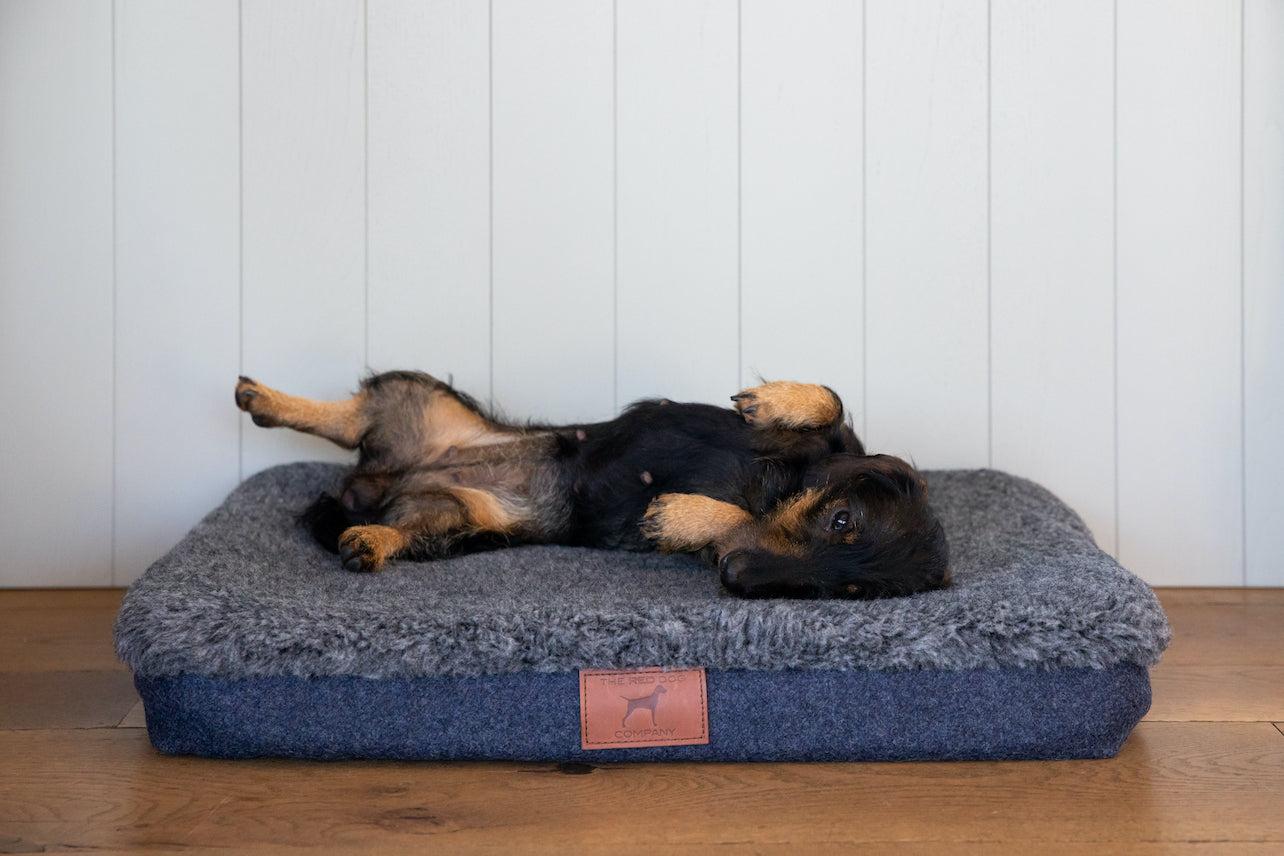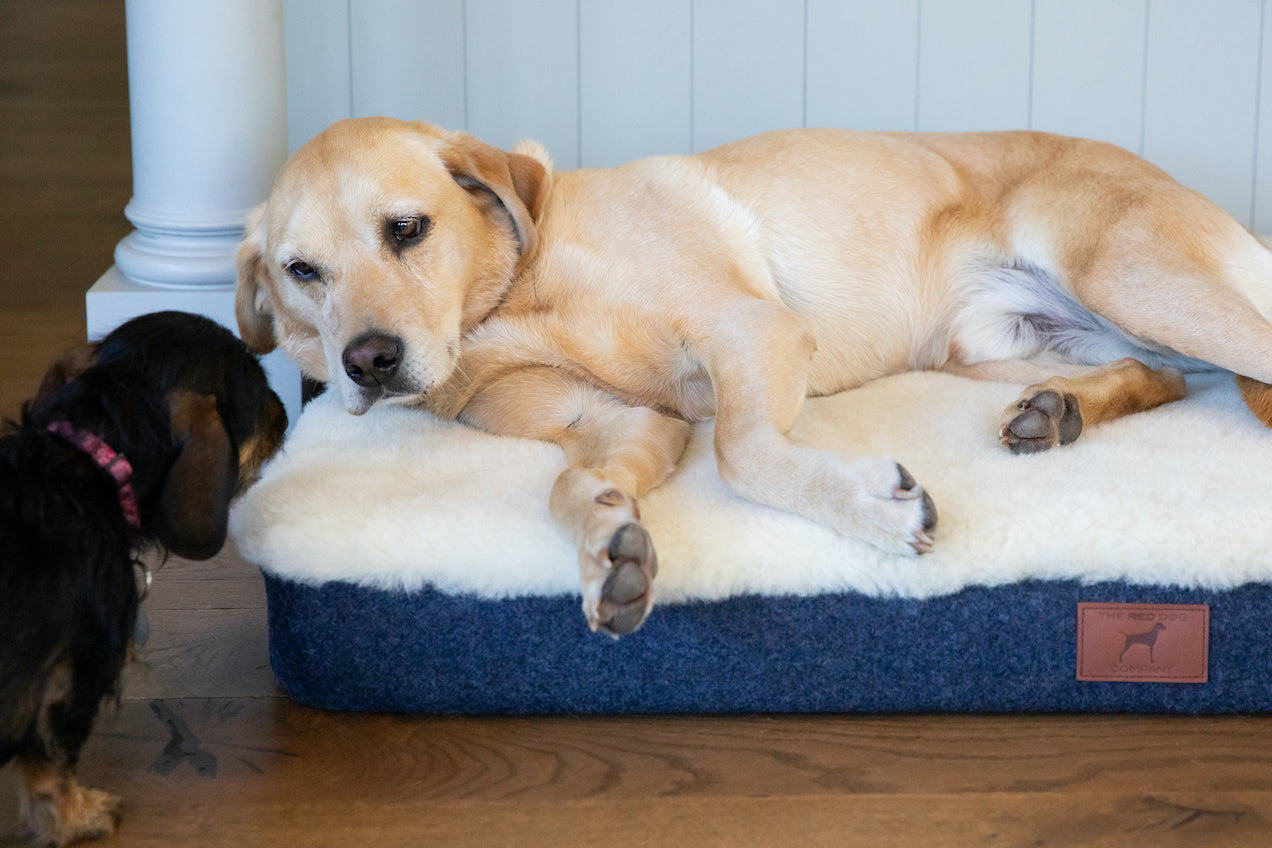Intervertebral disc disease (IVDD) is the most common spinal disease in dogs. Whilst we often associate the disease with the Dachshund, a subgroup of the disease exists that more commonly presents in older, medium to large breed dogs.
A spectrum of clinical signs can be seen with IVDD from back pain, lameness, weakness and incoordination to paralysis in the hind legs or all four limbs and loss of deep pain sensation. Animals that are unable to walk may also be unable to urinate on their own. The age, breed and history can lead us to a presumptive diagnosis but similar neurological signs could be seen with a tumour, fracture, infection or inflammation involving the vertebrae or spinal cord. Diagnostic tests are needed to determine the exact location and cause of the problem and to determine appropriate therapy.
What is an intervertebral disc?
Intervertebral discs are the shock absorbers that sit between the vertebrae of the spine, they provide support and allow the vertebral column to flex, extend and twist. The discs have a fibrous outer, the annulus fibrosis, and a jelly like inner, the nucleus pulposos. IVDD is a condition in which the discs degenerate, leading to a reduction in their shock absorbing capacity and can ultimately lead to disc herniation, ‘slipped disc’ and spinal cord compression.
What types of IVDD are recognised in dogs?
Hansen type I disc disease is most commonly diagnosed in small breed dogs and especially the so called chondrodystrophic dogs which have disproportionately short limbs, including the Dachshund, Basset Hound and French Bulldog. Degenerative disc changes tend to occur early, so that these dogs can present from early adulthood, approximately 2 years old and onwards. The discs become dehydrated and the jelly like centre loses its shock absorbing capacity and sometimes becomes calcified. This puts the fibrous outer under intolerable strain so that the centre becomes prone to herniation through the fibrous outer. The speed and force of the extrusion determines the severity of the clinical signs but these dogs often present in sudden pain and sometimes as an emergency.
Hansen type II disc disease presents most commonly in medium to large breed dogs from approximately 6 years onwards. The degenerative discs again dehydrate but more uniformly across the inner jelly and fibrous outer. The discs bulge, so that the thickened outer protrudes upwards into the cord, rather than herniating its centre. Sometimes the fibrous outer may tear and this can be associated with bleeding and worsening of the spinal cord compression. As with Hansen type I, Hansen type II IVDD can present as sudden onset but often these cases can be more slowly progressive with mounting pain and a reducing willingness to exercise, jump or go up stairs.
High velocity, low volume disc disease occurs when a normal jelly like disc interior, that hasn’t undergone degenerative change, explodes through a sudden tear in the disc’s fibrous outer. This tends to be associated with trauma or extreme exercise and presents acutely and without ongoing spinal cord compression because the jelly like substance can dissipate. With appropriate rehabilitation these dogs can recover without surgery.
Treating IVDD
Treatment will depend on owner circumstances and the severity of the dog’s symptoms. On a first presentation with more mild symptoms dogs may be treated conservatively with strict rest and pain relief. Conservative treatment aims to reduce pain and swelling around the spinal cord and gives the torn outer rim of the disc time to heal. Some dogs treated this way will suffer with repeat attacks and each episode of disc herniation may cause additional damage.
In recurrent cases and where symptoms are more severe at first presentation, surgery may be undertaken. The extent of recovery of normal function depends on many factors, including how fast the disc material hit the spinal cord, the degree of the damage sustained by the spinal cord and the length of time that the spinal cord was compressed by the disc material. Whilst the most severely affected animals may be left with permanent damage, fortunately most dogs fairly quickly recover full limb function post disc disease surgery.
Disc disease has been shown to be inherited in some breeds and suspected in others, therefore, breeding from animals that have suffered from disc disease is not recommended.
Alison graduated from Cambridge University, in Veterinary medicine and surgery, in 1999. She initially worked in mixed practice before concentrating on domestic animals for the next 16 years. When Alison isn’t working as a vet, she is helping The Red Dog Company make the very best dog beds and accessories available.
#thereddogcompany #dachshund #bassethound #frenchbulldog #Intervertebraldiscdisease #ivdd #orthopeadicdogmat #memoryfoamdogmat #orthopaedicdogbed #memoryfoamdogbed



